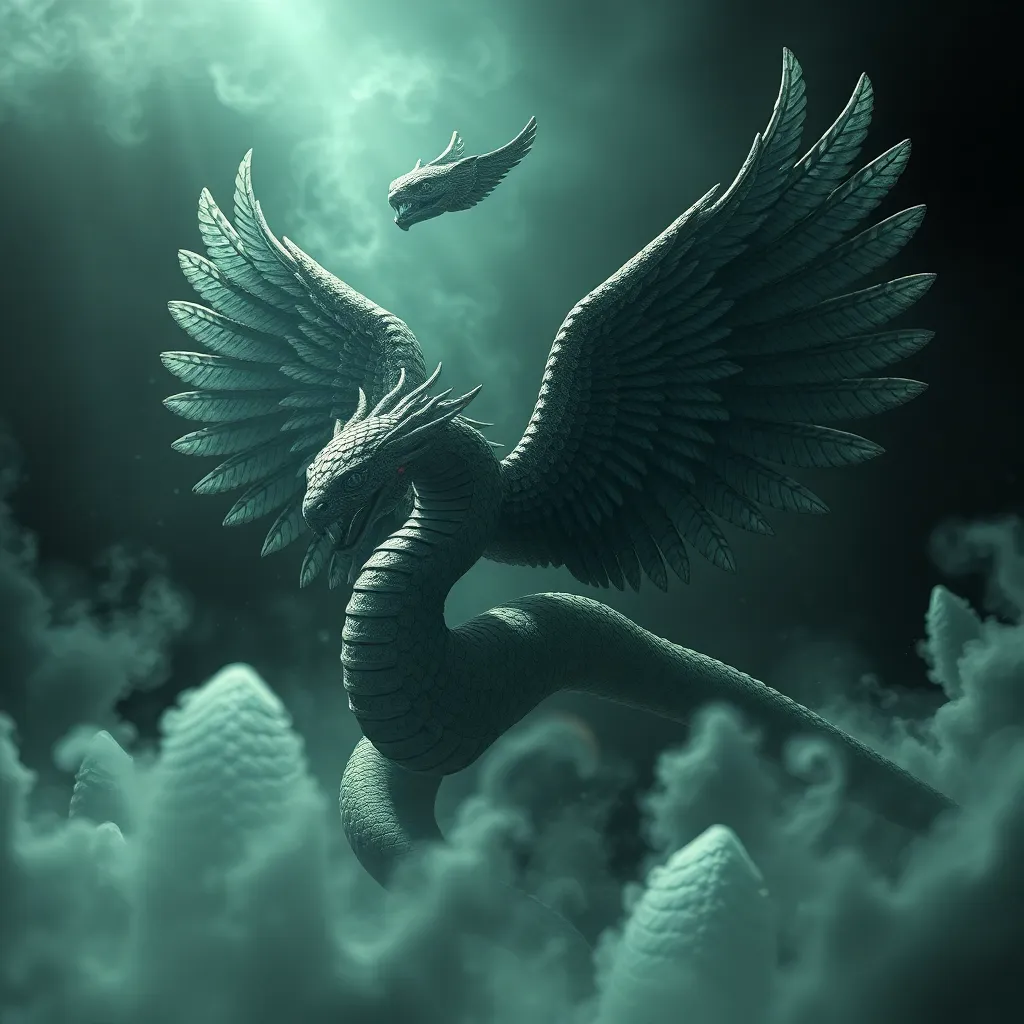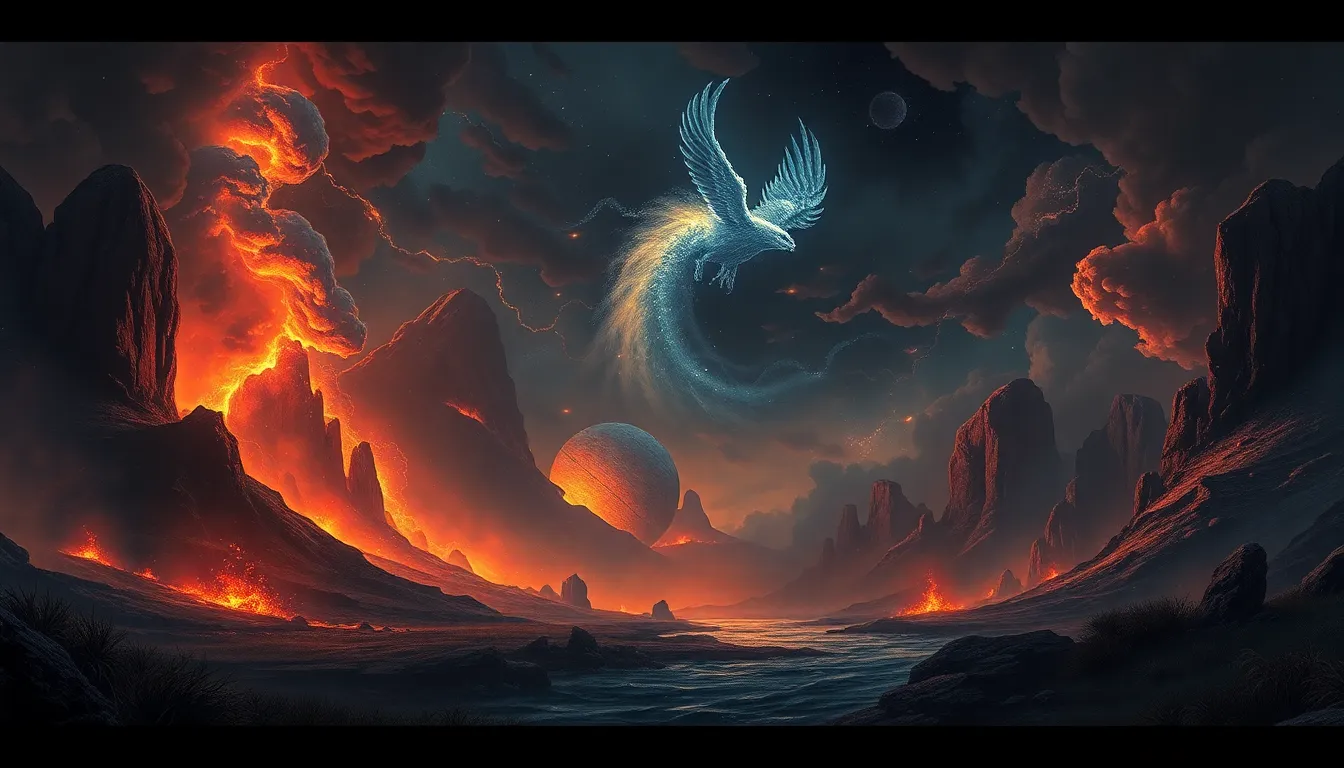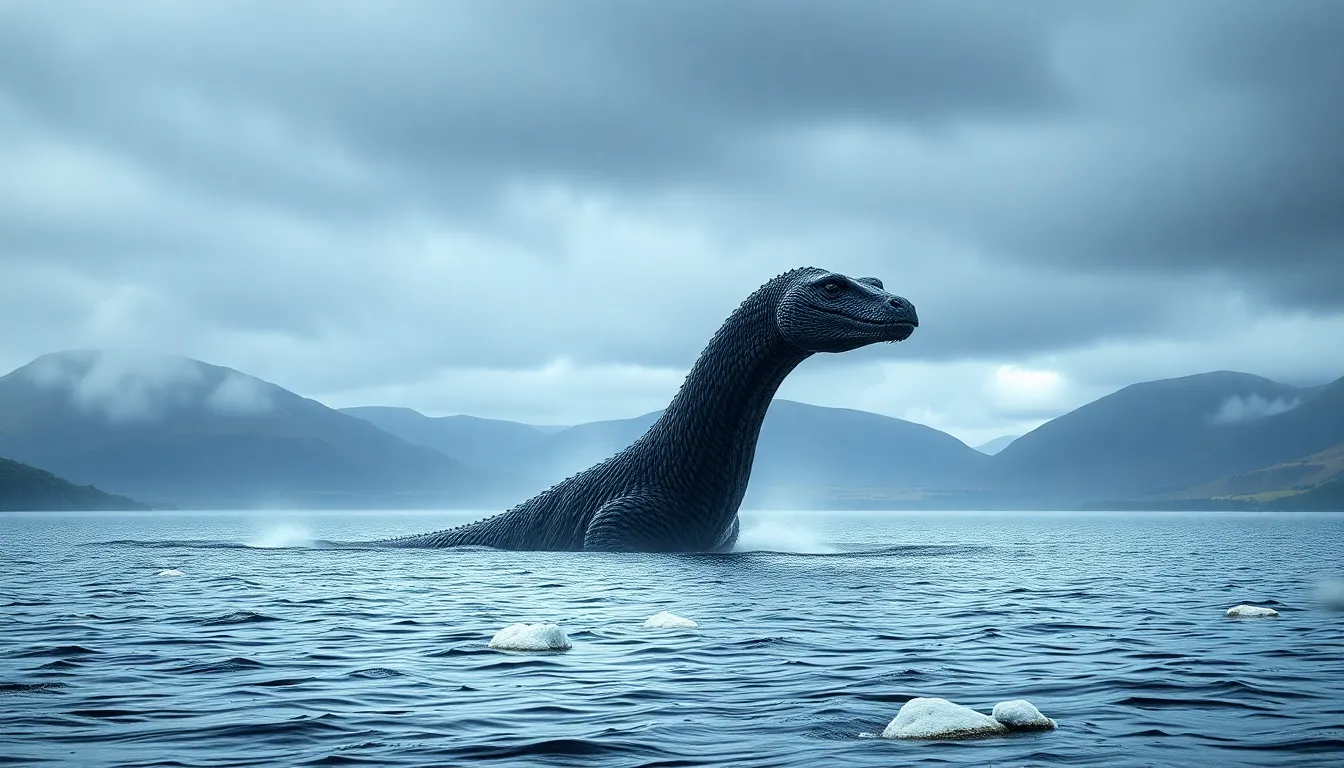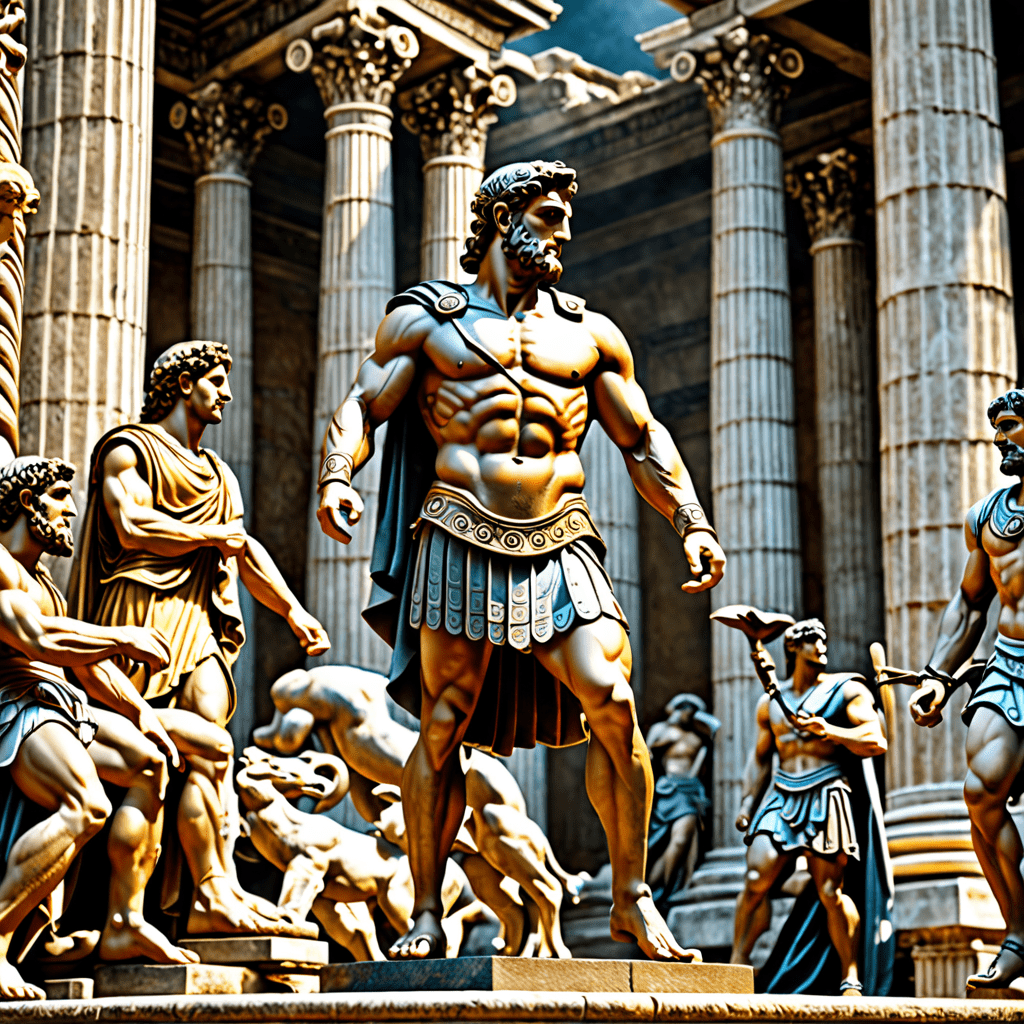The Feathered Serpent and the Divine Feminine: Quetzalcoatl’s Relationship with Goddesses
I. Introduction
Quetzalcoatl, often referred to as the Feathered Serpent, is one of the most significant deities in Mesoamerican mythology, revered across various cultures including the Aztecs and the Toltecs. He embodies a complex blend of traits including creation, wisdom, and the duality of life and death. This article delves into Quetzalcoatl’s mythology, particularly his relationship with goddesses and the overarching theme of the Divine Feminine.
The Feathered Serpent holds a prominent place in the pantheon of Mesoamerican gods, symbolizing not only the sky and the earth but also the connection between the physical and spiritual realms. Central to this exploration is the concept of the Divine Feminine, which represents the nurturing, intuitive, and dynamic aspects of femininity that complement and balance masculine energy.
II. Quetzalcoatl: The Feathered Serpent
A. Historical and cultural context of Quetzalcoatl
Quetzalcoatl’s origins can be traced back to ancient Mesoamerican civilizations, particularly among the Olmec and later the Aztec cultures. He was revered not only as a creator god but also as a patron of arts, agriculture, and the wind. His narrative evolved over centuries, adapting to the beliefs and practices of the societies that worshipped him.
B. Attributes and symbolism associated with Quetzalcoatl
- Feathered Serpent: Represents the union of the earthly (serpent) and the celestial (feathers).
- Wisdom: Associated with knowledge, learning, and the arts.
- Creation: Credited with the creation of humanity and the earth.
- Duality: Embodies the balance between opposing forces, such as life and death.
C. Role in Mesoamerican cosmology and society
Quetzalcoatl was integral to Mesoamerican cosmology, often viewed as a mediator between gods and humans. His teachings emphasized the importance of knowledge and ethical living. Festivals and rituals dedicated to him were significant, often involving elaborate ceremonies that highlighted both his benevolence and the reverence for the natural world.
III. The Divine Feminine: Exploring the Concept
A. Definition and characteristics of the Divine Feminine
The Divine Feminine refers to the sacred qualities traditionally associated with femininity, including intuition, compassion, creativity, and nurturing. It embodies the essence of life and the multiplicity of female experiences, often contrasted with patriarchal ideologies. In many cultures, this aspect has been honored through goddess worship and feminine deities.
B. Historical perspectives on goddess worship in Mesoamerican cultures
Mesoamerican societies revered a multitude of goddesses who represented various aspects of life, from fertility to war. This reverence for the feminine divine indicates a cultural acknowledgment of women’s roles in society and spirituality. Women often held significant positions in religious practices, serving as priestesses and leaders in rituals.
C. Connection between feminine energy and nature
The Divine Feminine is deeply connected to nature, symbolizing earth, fertility, and the cycles of life. This connection is evident in the reverence for goddesses associated with agriculture, such as Xochiquetzal, who represents flowers and fertility, and Coatlicue, who embodies the earth and motherhood. These associations highlight the nurturing aspect of the feminine divine.
IV. Quetzalcoatl and His Divine Consorts
A. Overview of goddesses associated with Quetzalcoatl
Quetzalcoatl’s relationships with various goddesses illustrate the interplay between masculine and feminine principles in Mesoamerican mythology. His consorts include powerful figures who embody different aspects of the Divine Feminine, creating a dynamic partnership that enhances his narrative.
B. Notable figures: Coatlicue, Xochiquetzal, and others
- Coatlicue: The earth goddess and mother of gods, representing life, death, and rebirth.
- Xochiquetzal: The goddess of beauty, love, and fertility, symbolizing the nurturing aspect of femininity.
- Chalchiuhtlicue: The goddess of rivers and streams, embodying the life-giving forces of water.
C. The interplay of power and partnership in these relationships
The relationships between Quetzalcoatl and these goddesses showcase a balance of power and collaboration. Rather than presenting a hierarchy, these narratives highlight the mutual respect and interdependence between the masculine and feminine forces, reflecting a holistic view of the cosmos.
V. Myths and Stories: Quetzalcoatl and the Goddesses
A. Key myths that illustrate Quetzalcoatl’s interactions with goddesses
Numerous myths depict Quetzalcoatl’s interactions with goddesses, emphasizing themes of creation, balance, and the cyclical nature of life. In one story, Quetzalcoatl descends to the underworld to retrieve the bones of the dead, assisted by goddesses who provide him with guidance and support.
B. Themes of creation, fertility, and balance in these narratives
Many of these myths revolve around the themes of creation and fertility, illustrating how the Divine Feminine complements Quetzalcoatl’s creative powers. The cooperation between Quetzalcoatl and the goddesses reflects the importance of balance in the universe, where both masculine and feminine energies are essential for life.
C. Symbolism of the Feathered Serpent in relation to feminine deities
The Feathered Serpent serves as a symbol of the intertwining of male and female energies. His feathered form represents aspiration and the spiritual realm, while the serpent symbolizes the earth and its mysteries. This duality resonates with the qualities of the goddesses who are both nurturing and fierce, embodying the full spectrum of feminine power.
VI. The Cultural Impact of Quetzalcoatl and the Divine Feminine
A. Influence on art, literature, and rituals in ancient Mesoamerican societies
Quetzalcoatl and the associated goddesses significantly influenced Mesoamerican art, literature, and rituals. Their stories were depicted in codices, sculptures, and murals, showcasing the importance of these deities in the cultural narrative. Rituals often included offerings and ceremonies dedicated to both Quetzalcoatl and the goddesses, highlighting their roles in agricultural cycles and community life.
B. Legacy and continued reverence in modern interpretations
Today, the legacy of Quetzalcoatl and the Divine Feminine continues to resonate in various spiritual practices and cultural expressions. Many contemporary movements seek to reclaim and honor the feminine aspects of spirituality that were historically marginalized.
C. How these myths inform contemporary views on gender and spirituality
The stories of Quetzalcoatl and the goddesses challenge traditional gender roles and emphasize the importance of balance between masculine and feminine energies. In contemporary spirituality, these narratives offer a framework for understanding gender dynamics and the necessity of integrating both aspects within individuals and society.
VII. Comparative Analysis: Quetzalcoatl and Other Mythological Figures
A. Similarities and differences with other cultures’ deities (e.g., Tammuz, Osiris)
When comparing Quetzalcoatl to deities from other cultures, such as Tammuz from Mesopotamian mythology or Osiris from Egyptian mythology, one can see both similarities and differences. Each of these figures represents resurrection and fertility, yet their narratives and cultural contexts provide unique insights into how societies view life, death, and the divine.
B. The role of male-female dynamics in different mythologies
Across various mythologies, male-female dynamics play a crucial role in the narratives, often depicting the interplay of creation and destruction. These dynamics reveal cultural values and beliefs regarding gender, power, and the natural world.
C. Cross-cultural themes of creation and destruction
The themes of creation and destruction are universal in mythologies worldwide. Quetzalcoatl’s role as a creator god parallels figures from other cultures who also embody these dualities, showcasing the shared human experience of understanding existence



